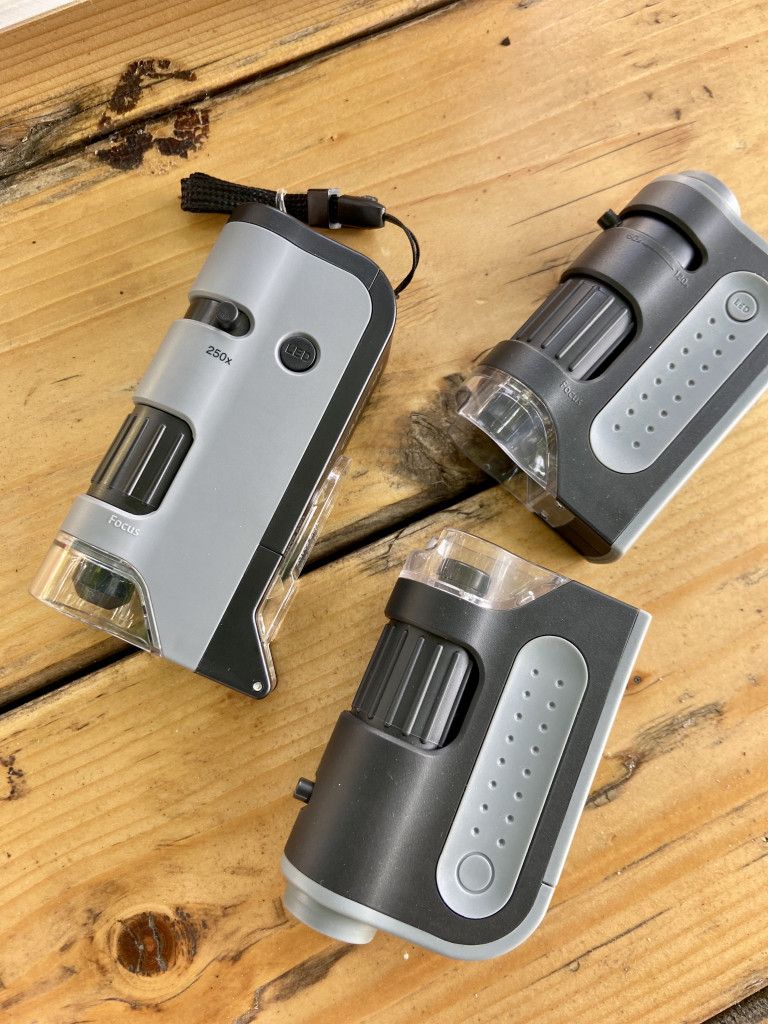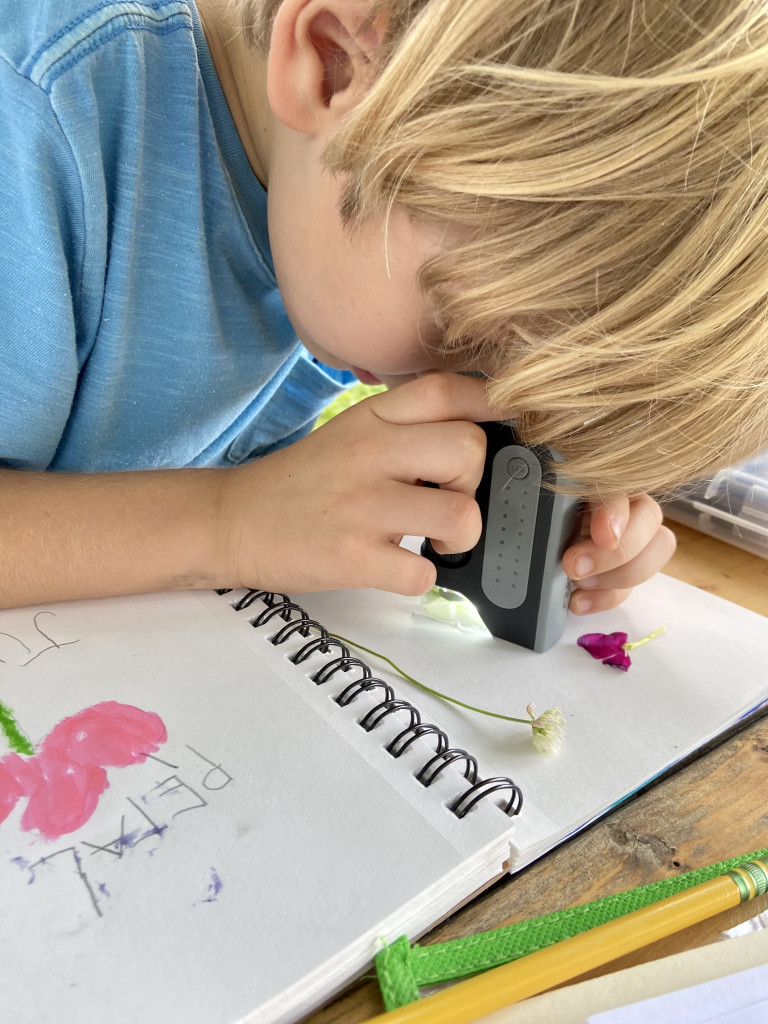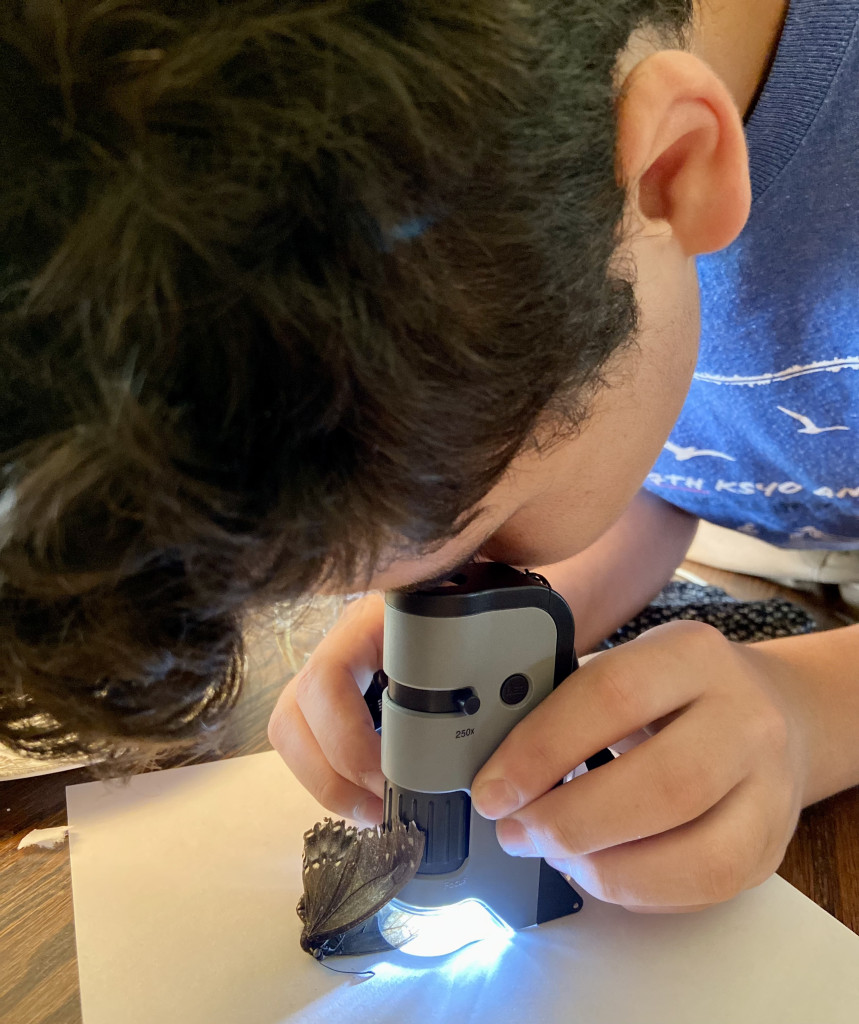Links may direct to affiliate sites. Purchases made through these links support our family’s work in spreading the Gospel to unreached areas.
Ages ago, we owned a microscope. It wasn’t an especially excellent microscope, but it did the job. It soldiered on through years of use and abuse, aiding in high school level biology as faithfully as it had served when it was called upon to be a tool in the kindergarten nature study kit.
We’ve made it without a microscope for some years now, hopping along happily with a variety of magnifying tools. This year, however, one of my kids (it was Jude) was absolutely intrigued by a series of website photos of a magnified leaf. Two days later, our Harbor and Sprout lesson had us watching videos of microscopic pond life and the questions came fast and furious.
Time to level up.
Because I’m homeschooling five relatively close in age right now, I knew that a single microscope set up like I’d had before was going to be less than desirable. I also knew that technology had come quite a way in the last fifteen years. Chances were good that something better was available— and for a lot less.
I was right.
It took less than an hour to find the perfect tools for our homeschool microscope needs. And surprise! Neither of them is an actual microscope in the traditional sense.

Both are made by Carson, a brand I was already familiar with. The first is a pocket magnifier, but it’s a deceptively powerful little thing! It’s sturdy, easy to use, lightweight, and inexpensive enough to justify buying in multiples. I ordered two out of the gate, but am planning on adding one more each month I’m able until every child has his or her own.

The thing I most love about this magnifier is how sharp the images are. At a rate of magnification of up to 120x, it’s so much clearer than I expected for the price. The small LED light means you don’t have to depend solely on daylight, either. Tote it on a nature walk to get up close and personal with a mossy rock, or occupy yourself with studying the individual strands in your cotton shirt. It’s a great value, and works reliably.
The second tool is labeled as a microscope, though it’s also handheld. It comes with a slide deck, and both LED and UV lights. Like it’s smaller cousin, it runs on AA batteries. This model, however, can clip to your phone’s camera as well as serving as a standalone magnifier. It’s range goes up to 250x, and it is everything advertised. Simple to use, portable, and a fraction of the price of a school-grade microscope.

We’ve already put these little guys through the paces. We’re loving our Harbor and Sprout botany study, and have utilized our new “microscopes” in flower dissection. Then there are the normal finds. Cicada shells.Chicken feathers. Dead butterflies. Blades of grass. I foresee a lot of up close and personal spying on the microscopic world in the coming months. And Jude? He’ll already asking for something new… a telescope.